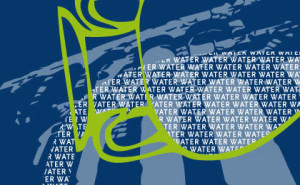Key Topic Water Management
Water is life. Creating an inventory of water resources
The junior research group of Area A takes a closer look at a fundamental basis of culture
 One of the Key Topics is water management. The junior research group A-3 with the same name directed by Brigitta Schütt focuses on various aspects connected with this complex subject. At the same time the cross-sectional group serves as an interdisciplinary network for related research in Topoi and cooperates with various projects in Areas A to D. Headed by Jonas Berking as young research group leader the group expects to create an inventory of all relevant information about water resources in antiquity.
One of the Key Topics is water management. The junior research group A-3 with the same name directed by Brigitta Schütt focuses on various aspects connected with this complex subject. At the same time the cross-sectional group serves as an interdisciplinary network for related research in Topoi and cooperates with various projects in Areas A to D. Headed by Jonas Berking as young research group leader the group expects to create an inventory of all relevant information about water resources in antiquity.
By the Bronze Age societies had begun to establish different structures for water harvesting techniques. These structures are still being applied in some places even today. This new sensibility concerning a safe water supply is manifested in various traces of water harvesting techniques or methods mainly found in semi-arid environments. Water management was a vital part of the water supply system of many ancient settlements in the arid environments of the Mediterranean region and Western Asia.
While the project aims at inventorying, classifying and mapping water management structures dating from the Bronze Age to the Middle Ages, it also investigates successive developments from a social or cultural perspective. The results of this investigation will help to determine whether a certain water management structure evolved at a certain location and time due to changes in hydrological or climatic conditions or due to social causes like knowledge transfer or population growth.
To this day, water remains the basic resource needed by any culture or settlement and is therefore an ideal basis for comparing ancient and modern structures. This also concerns questions of climate change, water scarcity, water power or the adoption and realization of techniques and knowledge. Water management presently is of particular interest at a time when the world’s population is still growing and – at the same time – increasing population movements or migration due to climate changes are to be expected. One contemporary example of the collapse of whole ecological systems due to over-consumption of water is the disappearance of the Aral Sea.
Catastrophes caused by the lack of water play an important role in this research project. Apart from researching natural shifts of water the research group is very interested in exploring the socio-cultural consequences of lack of water or mismanagement. It is obvious that most harvesting strategies were expected to mitigate periods of drought. During a long dry period an insufficient harvesting capacity therefore can lead to disastrous results. In fact we do have evidence of such catastrophes in Antiquity and of the spread of information about these events. But at the beginning of such a complex research project it is not yet possible to determine the consequences suffered by the communities in question. Careful analysis is required once a change in the political system or a possible change of techniques has been identified.

Great water tank at Resafa, Syria
Architecture plays an important role especially regarding techniques and the hydraulic basis of water management, because water harvesting is basically a question of installing measurement systems, regulation elements and distribution facilities. The remains of aqueducts, pipes and resorts supply a lot of information about engineering skills and organizational efficiency and maybe also about the population.
Of particular importance are issues relating to social conditions, governance and water-use rights, as well as the spread of know-how, the dissemination of water-harvesting techniques and wastewater treatment and disposal strategies. Furthermore, legislation is an important aspect of the investigation, because it can show the potential of governance structures and regulations installed by the Roman Right.
RELATED LINKS
Events: https://www.topoi.org/group/a-3/events/
Projects: https://www.topoi.org/group/a-3/projects/
Read more articles in TOPOI FEATURE
